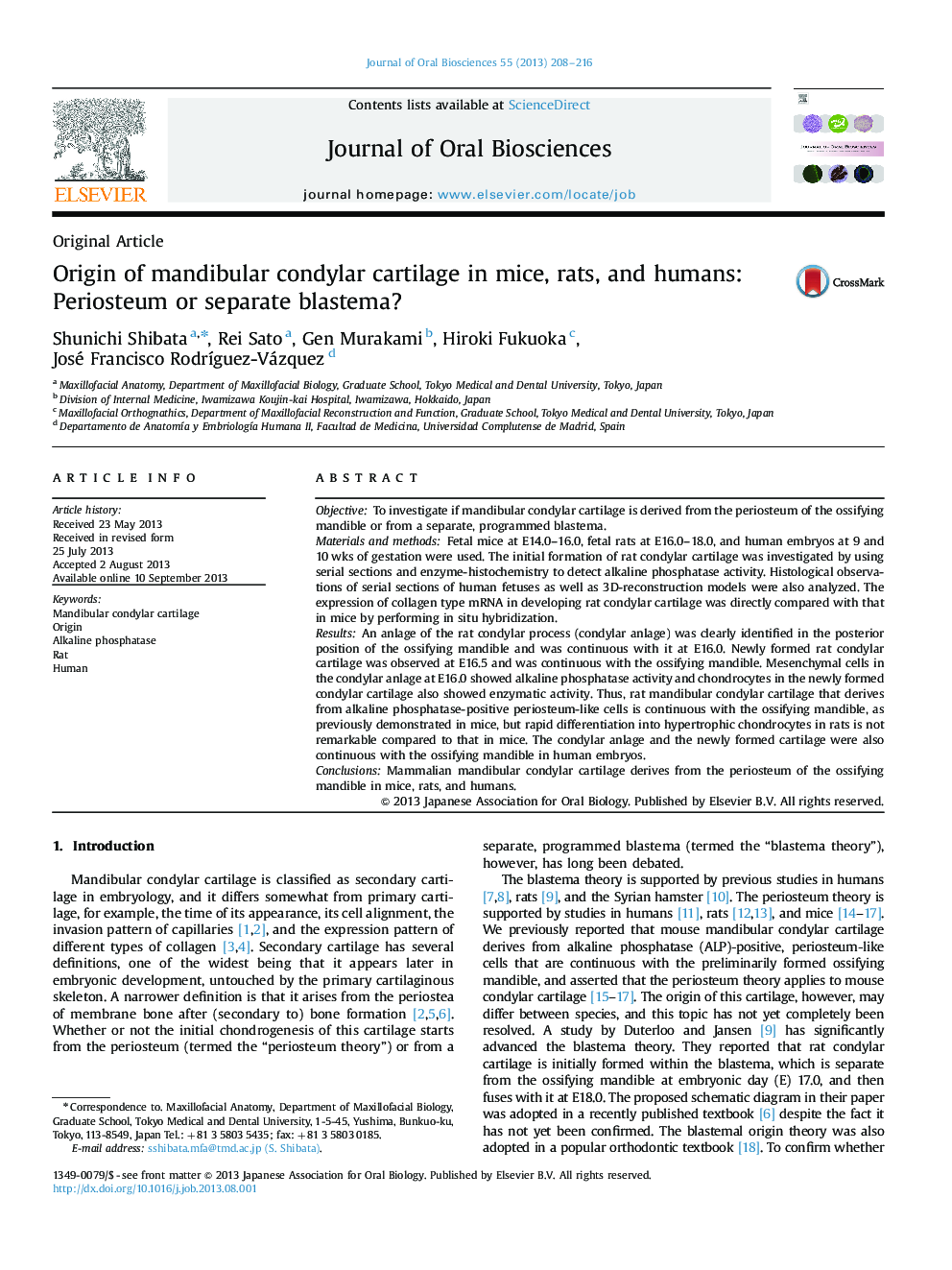| Article ID | Journal | Published Year | Pages | File Type |
|---|---|---|---|---|
| 2776845 | Journal of Oral Biosciences | 2013 | 9 Pages |
ObjectiveTo investigate if mandibular condylar cartilage is derived from the periosteum of the ossifying mandible or from a separate, programmed blastema.Materials and methodsFetal mice at E14.0–16.0, fetal rats at E16.0–18.0, and human embryos at 9 and 10 wks of gestation were used. The initial formation of rat condylar cartilage was investigated by using serial sections and enzyme-histochemistry to detect alkaline phosphatase activity. Histological observations of serial sections of human fetuses as well as 3D-reconstruction models were also analyzed. The expression of collagen type mRNA in developing rat condylar cartilage was directly compared with that in mice by performing in situ hybridization.ResultsAn anlage of the rat condylar process (condylar anlage) was clearly identified in the posterior position of the ossifying mandible and was continuous with it at E16.0. Newly formed rat condylar cartilage was observed at E16.5 and was continuous with the ossifying mandible. Mesenchymal cells in the condylar anlage at E16.0 showed alkaline phosphatase activity and chondrocytes in the newly formed condylar cartilage also showed enzymatic activity. Thus, rat mandibular condylar cartilage that derives from alkaline phosphatase-positive periosteum-like cells is continuous with the ossifying mandible, as previously demonstrated in mice, but rapid differentiation into hypertrophic chondrocytes in rats is not remarkable compared to that in mice. The condylar anlage and the newly formed cartilage were also continuous with the ossifying mandible in human embryos.ConclusionsMammalian mandibular condylar cartilage derives from the periosteum of the ossifying mandible in mice, rats, and humans.
